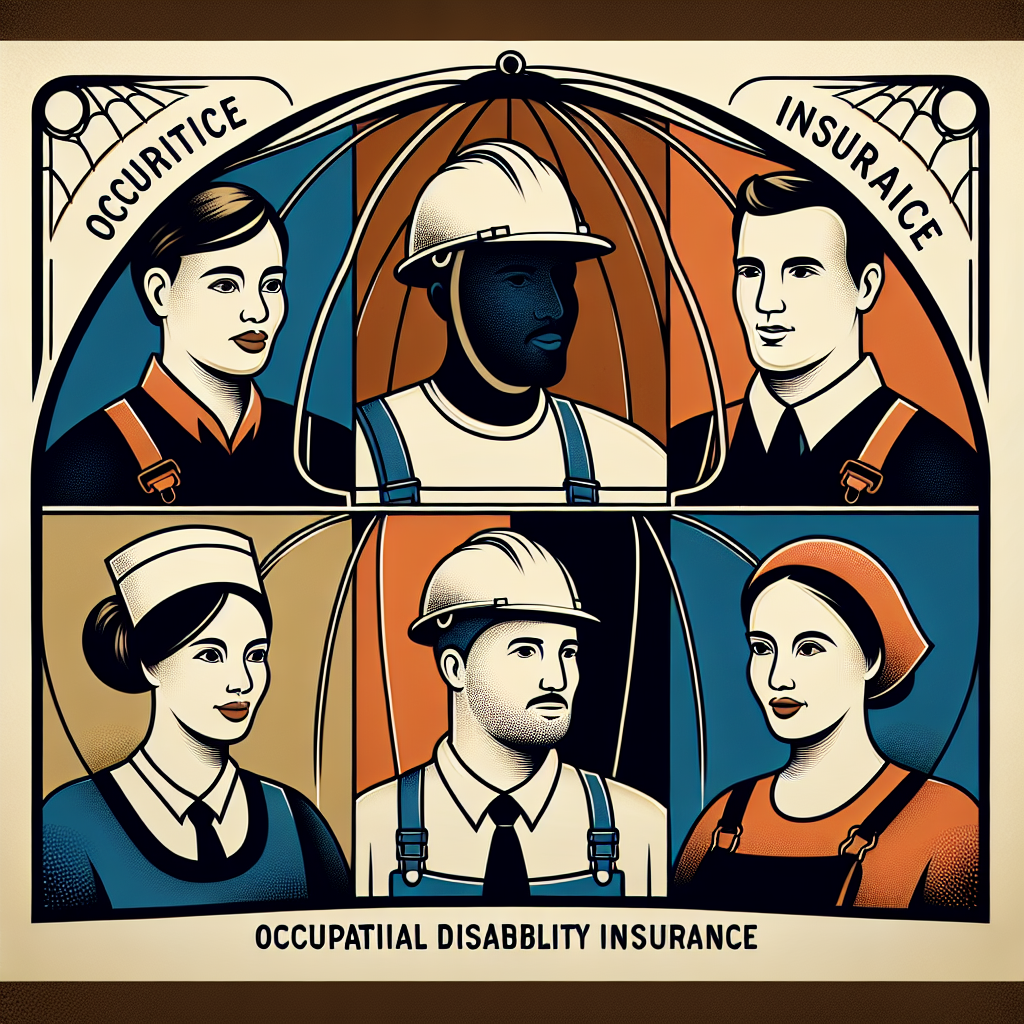Filed under Disability Insurance on
Understanding Occupational Disability Insurance Basics

When it comes to protecting your financial future, understanding occupational disability insurance basics is essential. Whether you’re a seasoned professional or just starting your career, having a comprehensive grasp of this type of insurance can safeguard against unforeseen circumstances that might jeopardize your ability to earn an income. Delve into the intricacies of occupational disability insurance to ensure that you can make informed choices about safeguarding your livelihood.
What Is Occupational Disability Insurance?
Occupational disability insurance, often referred to as "income protection insurance," is a coverage plan designed to provide financial support if you become unable to work due to an illness or injury. This type of insurance is crucial because it replaces a portion of your income, helping you manage daily expenses even when you're unable to earn through work.
Why Is It Important?
Employees might assume that their savings or government benefits are enough to see them through a disability, but that’s rarely the case. Occupational disability insurance offers peace of mind, ensuring that you and your family can maintain your standard of living in the face of medical adversity. Moreover, as the world becomes increasingly specialized, the loss of a particular skill due to disability can be financially catastrophic without the right protections in place.
Types of Occupational Disability Insurance
When understanding occupational disability insurance basics, it's important to know that there are two primary types: short-term and long-term disability insurance.
Short-Term Disability Insurance
This coverage typically replaces a portion of your income for a short duration, generally ranging from a few weeks to a year. Short-term disability insurance is often provided by employers, but individual plans are also available. If you face a temporary disability, such as recovery after surgery, short-term plans are invaluable.
Long-Term Disability Insurance
Long-term disability insurance kicks in when short-term benefits end, with payouts lasting for several years, or even until retirement. Long-term plans are crucial for serious illnesses or injuries that render you unable to work for an extended period. Many professionals opt for these plans to ensure a continuous safety net.
How Occupational Disability Insurance Works
To better understand occupational disability insurance basics, let's explore how this vital safety net operates. When a covered disability occurs, policyholders receive a portion of their lost income through monthly payments, typically calculated as a percentage of their salary. However, benefits may have a waiting period, known as the "elimination period," which is the time between when a disability begins and when benefits start to be paid. Depending on the policy, elimination periods can range from a few weeks to several months.
Coverage Scope
Policies can be either "own occupation" or "any occupation." 'Own occupation' policies provide benefits if you can't perform the duties of your specific job. 'Any occupation' coverage, meanwhile, offers benefits only if you’re unable to perform any job that your education and experience qualify you for. Most people prefer 'own occupation' due to its broader terms.
Determining the Right Coverage
Understanding your unique needs is essential when selecting occupational disability insurance. Factors such as age, health status, occupation, and salary all contribute to shaping the ideal plan. For example, young professionals with specialized skills might prioritize 'own occupation' policies for bespoke coverage.
Consider Premium Costs
Premiums vary considerably based on the policy's stipulations, such as the benefit amount, duration, and elimination period. It's crucial to balance affordable premiums with comprehensive coverage. Consulting with a financial advisor could provide additional insights tailored to your financial situation.
Industry Trends in Occupational Disability Insurance
Staying informed about the latest industry trends can enhance your understanding of occupational disability insurance basics. A growing trend is the integration of wellness programs within plans, incentivizing healthier lifestyles which can lower premiums over time. Insurers are also increasingly leveraging technology, offering online tools and resources to streamline claims and manage policies efficiently.
Expert Opinions
Financial professionals emphasize the importance of revisiting your occupational disability insurance annually. Life changes such as marriage, having children, or career advancements can necessitate adjustments to your coverage. Proactively managing your plan ensures it continues to meet your evolving needs.
Key Considerations Before Purchasing
Before purchasing occupational disability insurance, thorough research and understanding of the policy terms are imperative. Scrutinize contract specifics, focusing on benefit limits, definitions of disability, and any exclusions or reductions in payouts. Ensuring that your policy aligns with your financial goals is crucial for long-term protection.
Evaluate Exclusions
All insurance policies come with exclusions that may impede your eligibility for benefits. Common exclusions include preexisting conditions or disabilities ensuing from high-risk activities. Be vigilant in reviewing these details to avert surprises during claims processing.
Government and Workplace Provisions
In addition to private plans, some government programs offer temporary disability benefits. However, relying solely on government provisions is often insufficient due to limited scope and duration. Likewise, while many employers offer occupational disability insurance, these plans might not fully cover your needs, necessitating supplemental individual policies.
Combining Plans
Bolstering employer plans with additional private coverage can mitigate coverage gaps, ensuring a robust income protection strategy. Exploring a combination of policies maximizes your financial preparedness against unforeseen disabilities.
Conclusion
Grasping the essentials of occupational disability insurance is an investment in your future stability. By understanding occupational disability insurance basics, you fortify your financial foundation against life's uncertainties. Whether it’s determining the appropriate type of coverage, identifying key policy features, or prioritizing necessary adjustments, financial literacy in this domain empowers you to make informed decisions and maintain financial continuity in challenging times.





